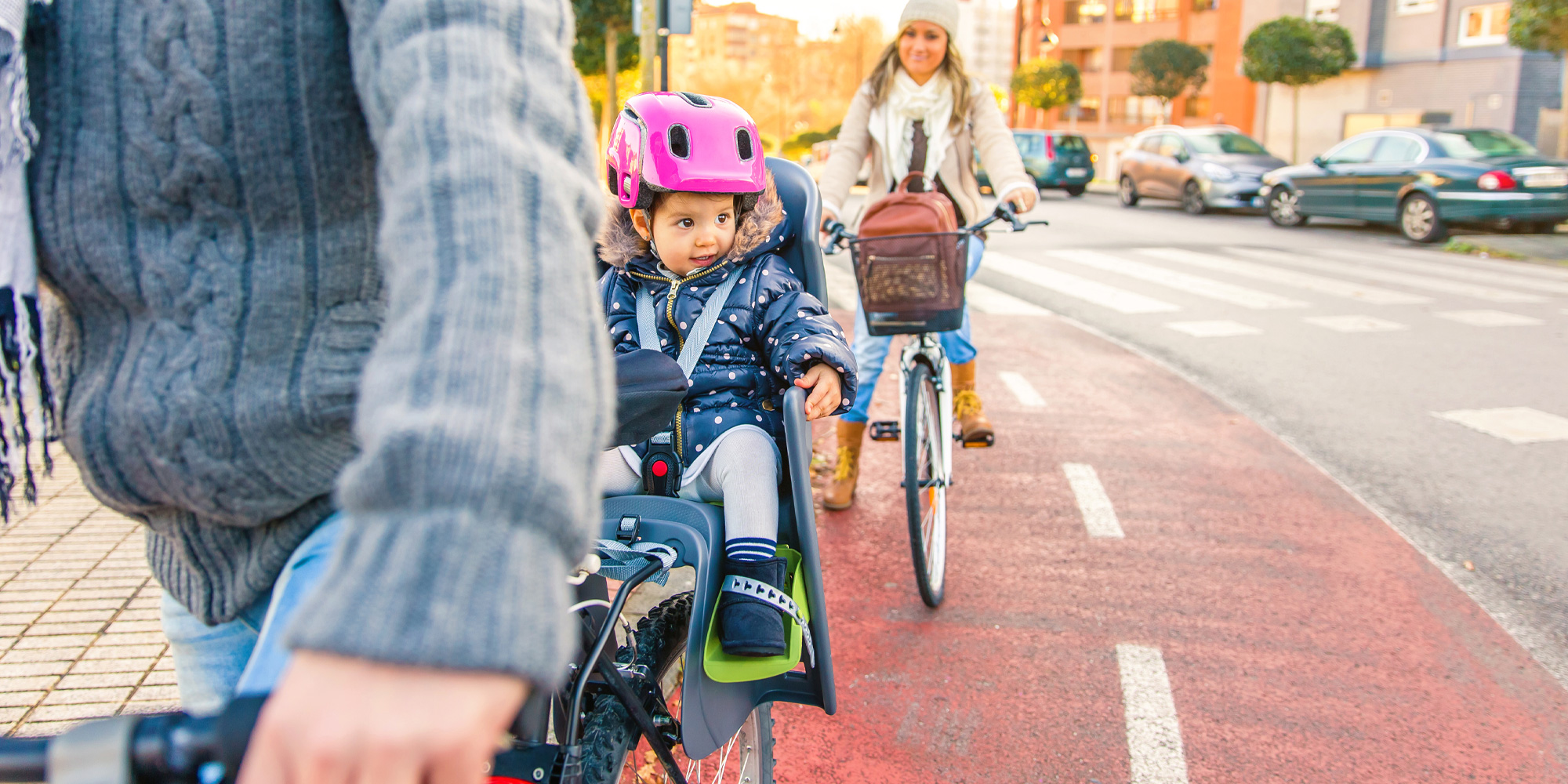There’s a truism among child-mindful urban planners: Children are an indicator species for cities. “Just as the presence of salmon in a river is a sign of the health of that habitat,” wrote Tim Gill, author of Urban Playground, “the visible presence of children and youth of different ages and backgrounds, with and without their parents, in numbers, is a sign of the health of human habitats.”
Now, a new Early Childhood Matters report, published by the Bernard van Leer Foundation, sounds the alarm on this indicator: children’s well-being is endangered, the report argues, and the reason is climate change.
The report, “Caring for Children and the Planet,” focuses on very young kids, for good reason. Eighty-eight percent “of the existing burden of disease attributable to climate change occurs in children younger than 5 years,” according to the World Health Organization. It’s a staggering data point that has received surprisingly little mainstream attention, especially considering that the early years are a time of intense, rapid development and can set the stage for a child’s life. One of the report’s key arguments is that what’s good for young children—clean air, safe streets and opportunities to play in nature—is good for our planet as well.
The first part of the report documents the various ways climate change is bringing tragedy to young lives around the globe. Extreme weather has forced the families of millions of babies and toddlers to flee their homes, often turning to makeshift urban slums where they have few rights and supports, and “face malnutrition, interrupted education and many other threats.”
Droughts, rising sea levels and floods are leading to a shortage of safe drinking water, with a “profound impact” on children, who are more vulnerable to toxins and dehydration. Because of their small size, children are also especially susceptible to rising air pollution and heat. In one chapter in the report, two physicians present evidence demonstrating how heat and air pollution are already threatening the health of newborns in the U.S. “Gains made in the health and well-being of children around the world, over many decades” are “at risk of being reversed,” concludes an overview of the research by New Zealand’s former prime minister Helen Clark.
This sobering assessment is only slightly tempered by the solutions-oriented second section of the report, and Clark’s reminder that “early childhood is not only a period of sensitivity to risk” but “also a time when the benefits of early interventions are amplified and risks can be reduced.” This inspiring section makes the case that how we do and don’t support young children can influence the course of our planet as well.
Breaking car and fossil fuel dependency to achieve cleaner air, safer streets, and more active and connected childhoods is amazingly good for kids and the environment as well, for instance. A long history of prioritizing cars as the dominant means of transportation has led to rampant carbon emissions, inefficient sprawl and massive highways that have isolated and segregated neighborhoods. “For health and climate reasons, it seems logical to prioritize children and families—as pedestrians—over cars, on city streets,” writes Jundiaí’s Mayor Luiz Fernando Machado in Brazil.
Active modes of transport like walking and taking public transportation for errands allow for the kinds of interactions between kids and caregivers that young children thrive on, and which can’t happen when a child is strapped into a car seat. They also have the added bonus of facilitating social cohesion and connection with the neighborhood. But too often, caregivers feel streets aren’t safe and don’t feel welcomed on public transportation. (Think of all the U.S. bus systems that ban open strollers and the many metro stations that aren’t accessible to caregivers with disabilities.) This results in “a vicious circle: more people choose to drive, adding to traffic and the sense of danger for others, and worsening public health through greater air pollution and lower levels of exercise.”
Several initiatives showcased in “Caring for Children and the Planet,” take steps to change that. In Nairobi, the city’s Metropolitan Services has set aside 20% of its budget for walking or cycling infrastructure and is working to build safer sidewalks and make other improvements that are strikingly low-cost but will nonetheless create a better walking environment for children and caregivers. In Latin America, Marcelo Mena and Xavier Altamirano have launched a network called Aires Nuevos to monitor the air children breathe as they play, learn and travel to and from school and child care. Modeled after a successful initiative in Chile, its goal is to pressure governments to seek solutions and change pollution policies. Streets for Life, a campaign to reduce the speed limit, aims to more broadly shift people’s “understanding of the place of cars and children in the city,” explains Saul Billingsley, executive director of London-based FIA Foundation that backs the campaign. “We must prioritize the cause of shared and equitable access to our streets and public space,” he writes. “The road towards a revolution for people and planet begins on low-speed streets.”
Cultivating nature-filled urban spaces for children to roam and play is another theme throughout the report. Trees absorb carbon and help mitigate the effects of a warming planet. Kids also love them. In one fascinating case study about Israel’s efforts to make “streets, libraries, parks, housing developments, open spaces and mobility infrastructure” more friendly to infants and toddlers, we learn that a place cannot be considered “child-friendly if the caregiver feels bored, left out, stressed or uncomfortable about engaging with the child.” To that end, many of the plans for natural play areas are exceptionally thoughtful about caregivers too. An initiative in Rotterdam reimagines schoolyards as the “green living rooms” of neighborhoods, “places where teachers want to hold lessons, and where parents want to spend time playing with their children or chatting with neighbors.” In Lima, Peru, an effort to turn asphalt into greenspace is as much about cultivating play as encouraging “families with young children to get to know each other and organically form a network of mutual support.”
Collectively, these case studies make a persuasive case that to keep our planet inhabitable, we must raise children who value nature, understand the power of community, and are ready and willing to fight for the environment. Many of the efforts showcased in “Caring for Children and the Planet” are sure to accomplish exactly that. But it is hard not to read this report without sensing the gaping disconnect between what families and initiatives can accomplish and the monumental scope of problem—the malnutrition, displacement and deaths already resulting from climate change. As the third activism-focused section of the report suggests, substantial change on this issue will not happen unless governments also take bold action by investing in alternate forms of energy while setting standards that will force corporations and industries—the largest contributors to climate change—to meaningfully and swiftly reduce carbon emissions. Much like raising children, saving the environment we all depend on is a collective effort, one that won’t happen with forward-thinking cities or programs alone.

Kendra Hurley
Kendra Hurley is a journalist and researcher focused on cities, families, policy and economic issues. Her journalism has appeared in The Atlantic, Bloomberg's CityLab, Slate and other publications. She was previously a policy researcher and editor at The New School, and also spent several years as a mentor-editor for a magazine written by and for teens in foster care.



